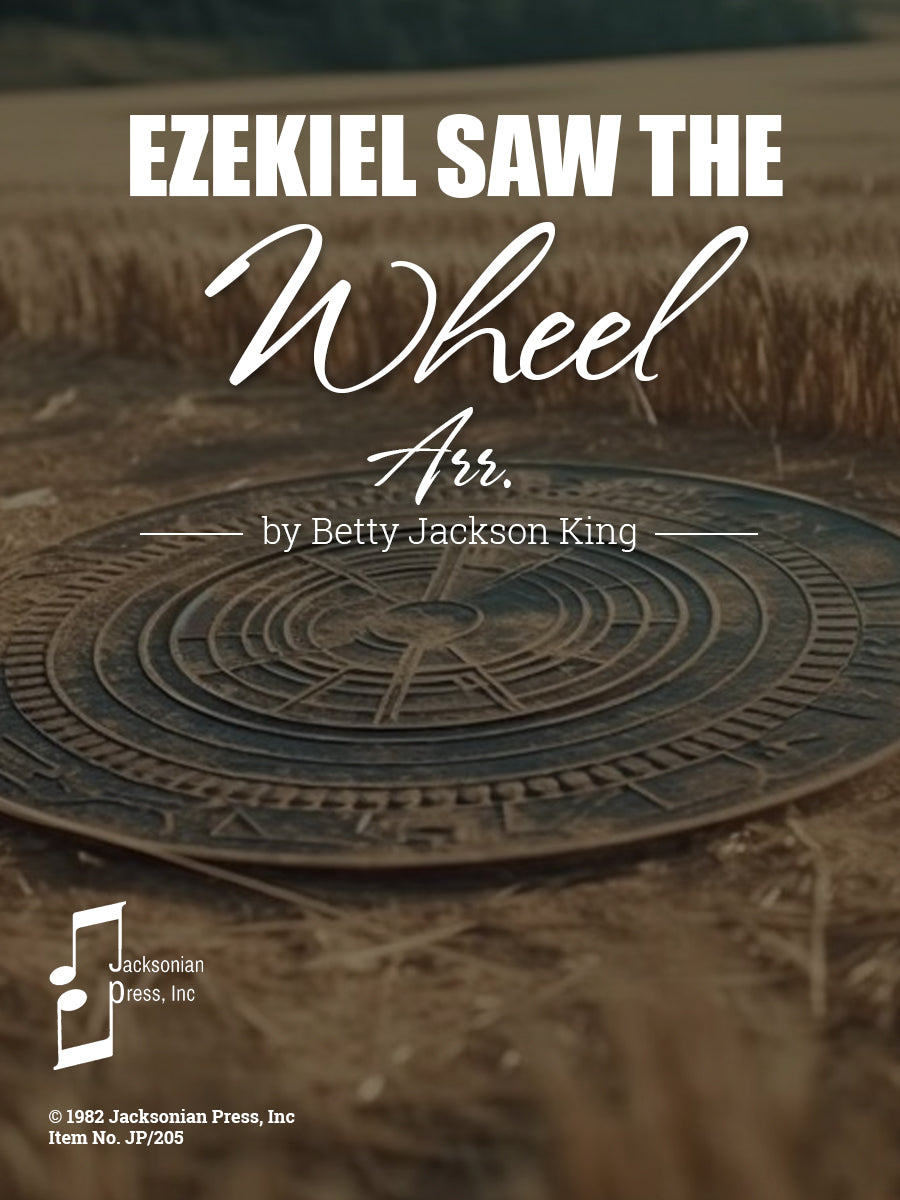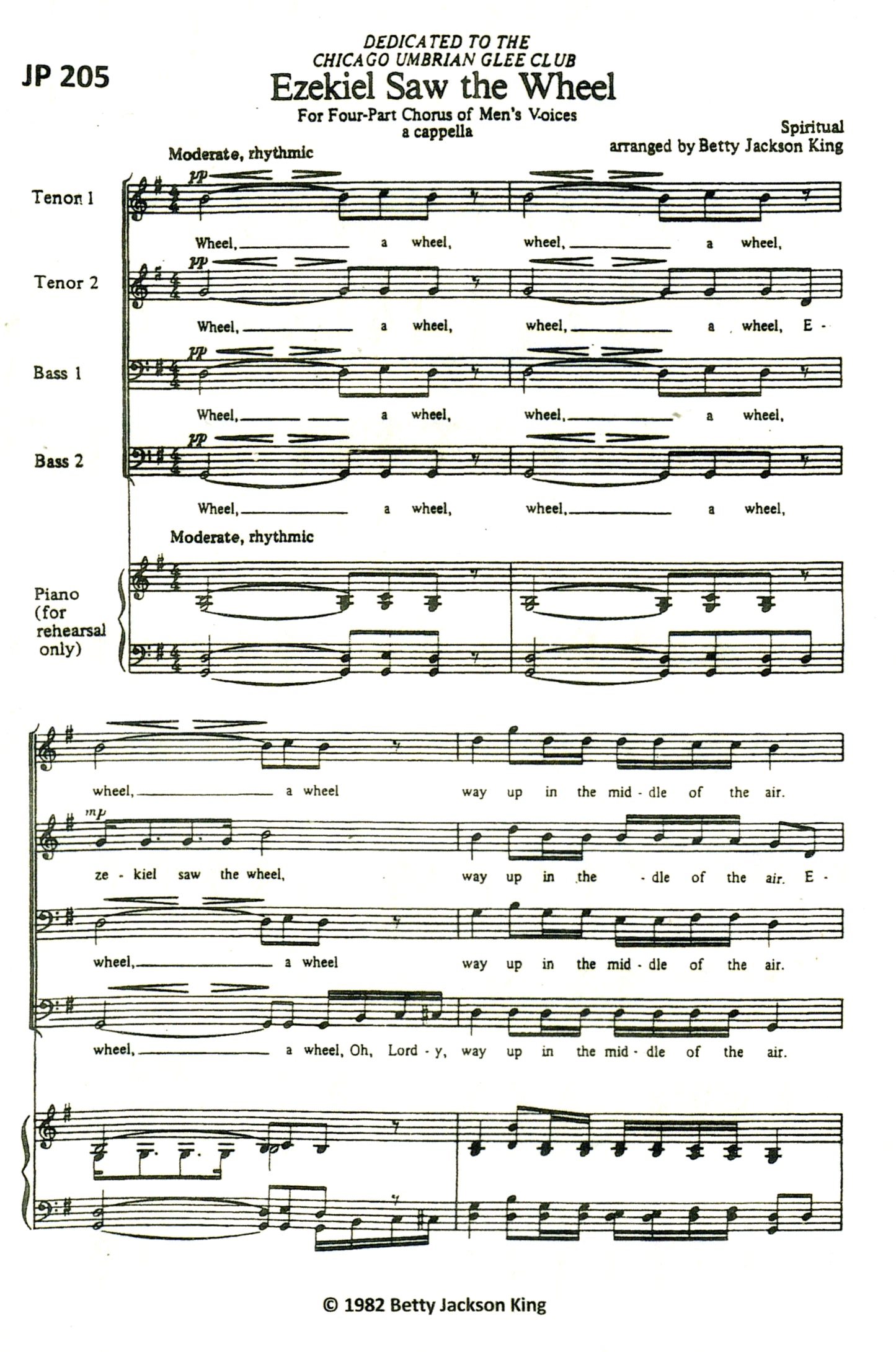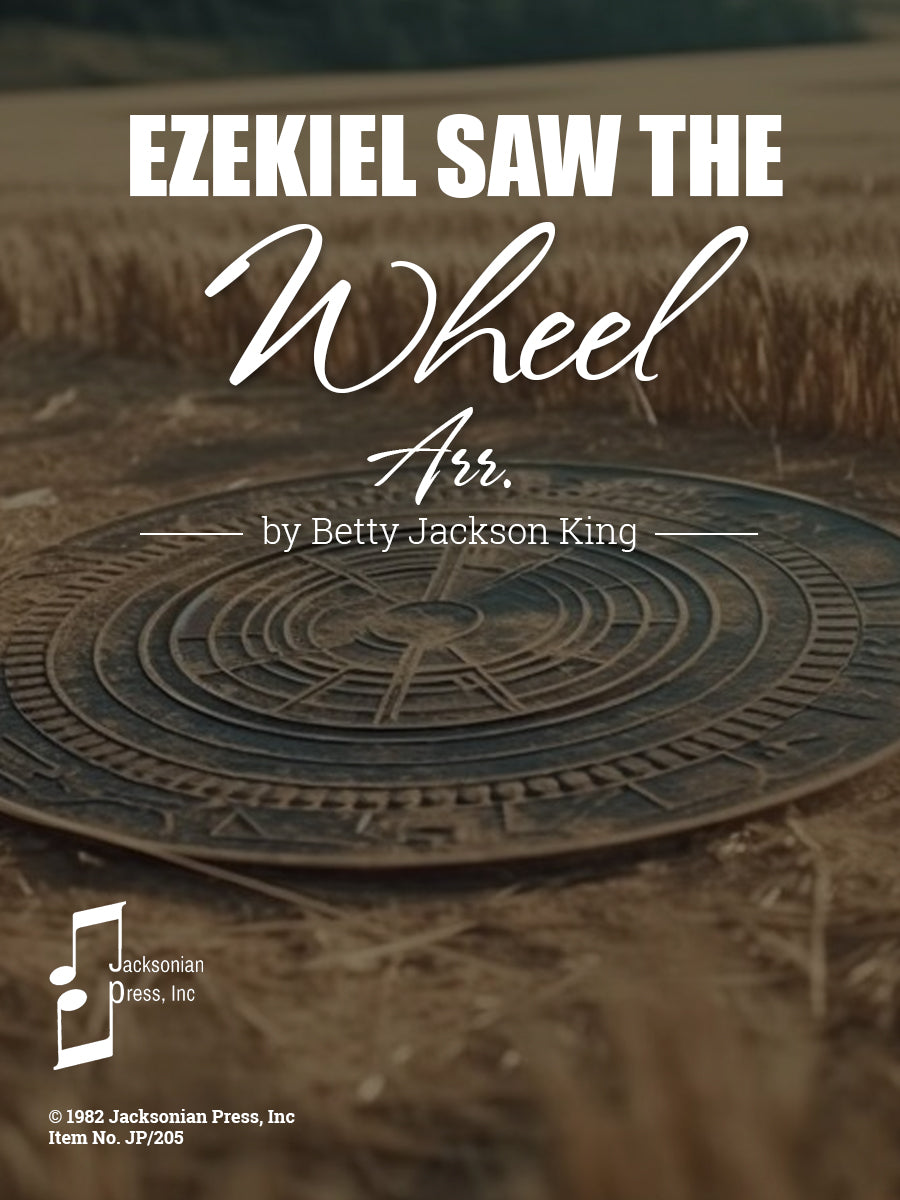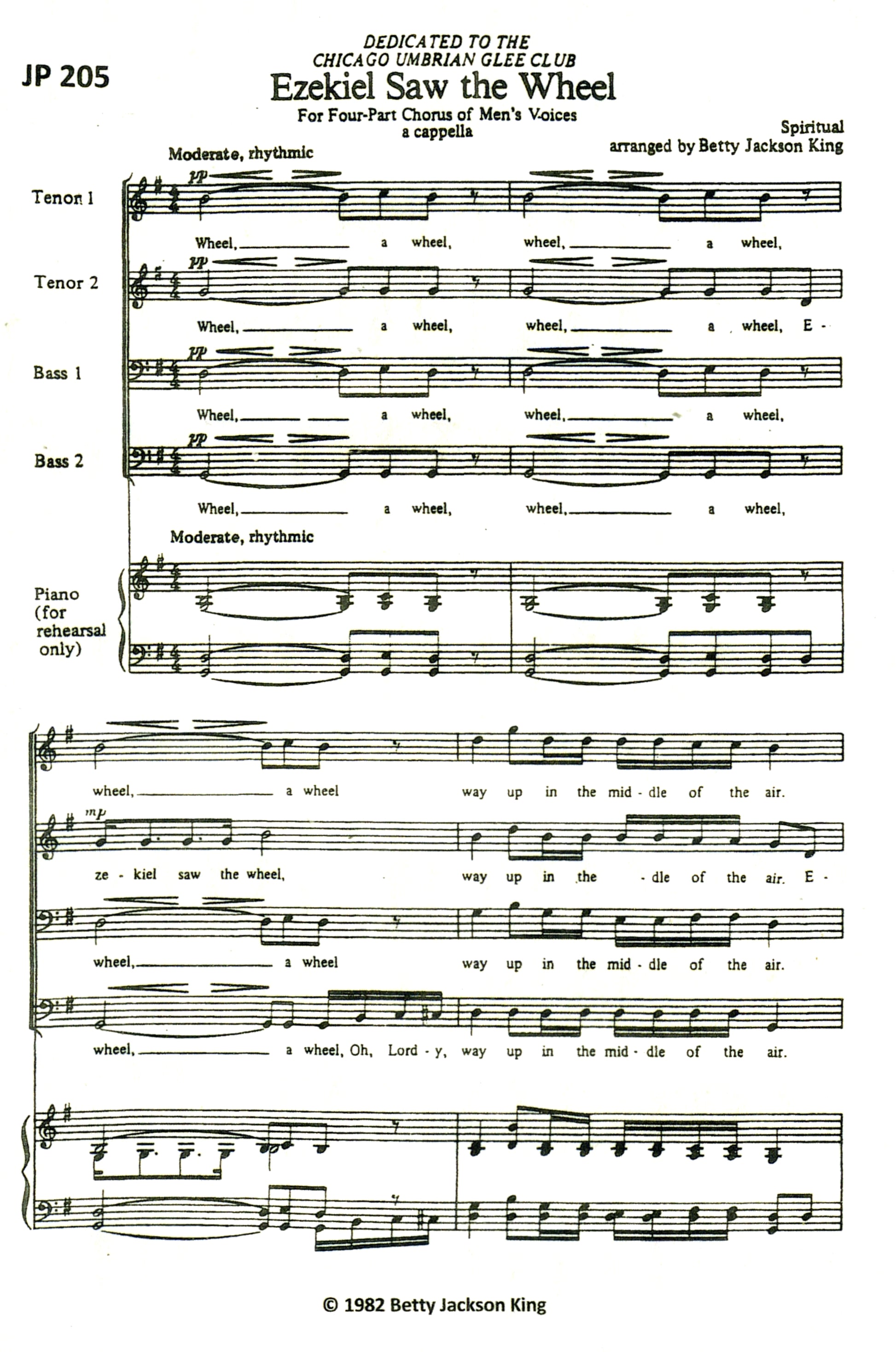

Video
Historical Narrative
Betty Jackson King’s arrangement of Ezekiel Saw the Wheel is one of her most commanding works for male chorus, demonstrating both her scholarly understanding of the African American spiritual and her mastery of choral architecture. The piece was dedicated to the Chicago Umbrian Glee Club, a distinguished all-male ensemble with strong ties to the Chicago Music Association (CMA) and the National Association of Negro Musicians, Inc. (NANM).
Founded during the early twentieth century, the Chicago Umbrian Glee Club was known for its polished interpretations of spirituals and art songs, as well as its collaboration with composers who expanded the concert repertoire for African American male choruses. Under the direction of various conductors—including figures active within Chicago’s Black musical community—the ensemble frequently performed at civic events, cultural festivals, and NANM conventions.
King’s association with the group reflects her broader mission to create sophisticated arrangements that preserved the dignity and emotional depth of spirituals while presenting them through advanced harmonic language and choral form. Ezekiel Saw the Wheel was part of a wave of postwar spiritual arrangements that elevated traditional material into the realm of serious concert performance, continuing the legacy of earlier trailblazers such as R. Nathaniel Dett and Hall Johnson.
Musical Description
Key: G major (one sharp)
Tempo: Moderato, rhythmic
The arrangement opens with a driving rhythmic motive on the word “Wheel,” introduced in imitation across all four male voice parts (Tenor I, Tenor II, Bass I, Bass II). This layered call-and-response texture establishes the circular momentum that characterizes the piece. The steady pulse in the lower voices and the syncopated entries in the upper voices combine to create an effect of rotation—an audible depiction of Ezekiel’s “wheel within a wheel.”
The piano accompaniment, marked for rehearsal only, provides harmonic grounding and rhythmic clarity during practice but is not intended for performance, emphasizing the ensemble’s self-sustaining vocal energy.
As the text unfolds (“Ezekiel saw the wheel, way up in the middle of the air”), King employs sequential repetition and dynamic growth to intensify the imagery. The alternation between unison declamation and full choral harmony reinforces both the narrative and the communal dimension of the spiritual.
The harmonic language remains largely diatonic within G major, but King enriches it through passing tones, secondary dominants, and subtle chromatic inflection. Her approach to text setting ensures that every syllable aligns with natural speech rhythm, preserving the vitality of the original folk tradition while maintaining structural sophistication.
Dynamic contrasts—from pp entrances to ff climaxes—mirror the visionary nature of the text. The repetition of the phrase “way up in the middle of the air” serves as a musical and emotional apex, capturing both awe and spiritual transcendence.


